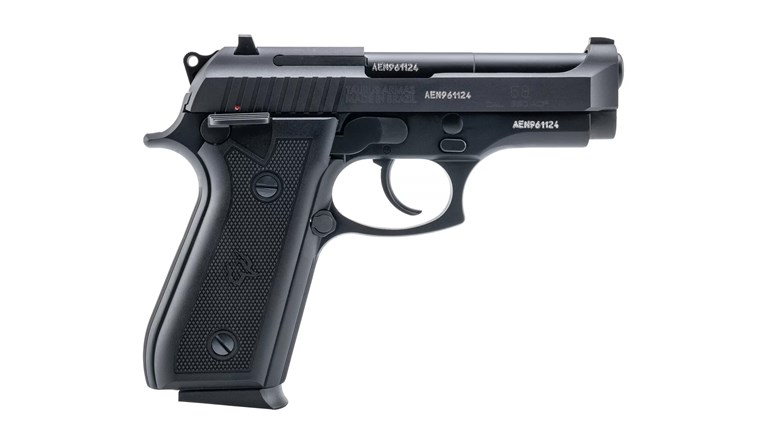
Some shooters consider the long and relatively heavy trigger pull of a double action (DA) revolver to be slow, cumbersome and inaccurate. Don't believe it.
In the hands of a skilled shooter, DA revolvers can be as fast as any semi-automatic when targets are close, open, and quick, and as accurate as a custom semi-auto when shots are tight, or target distances stretch. The key is to match the trigger technique used to the target requirements. There are two advanced techniques that are worth learning.
Live Trigger
A skilled DA revolver shooter can face three action pistol targets spaced several yards apart at seven yards, draw from the holster, and drill two perfect hits on each in under 3.5 seconds. The elite Masters can shave a second, or more, off that! This rivals the time of many semi-auto shooters. Those blistering times are made possible with the “live trigger” technique.
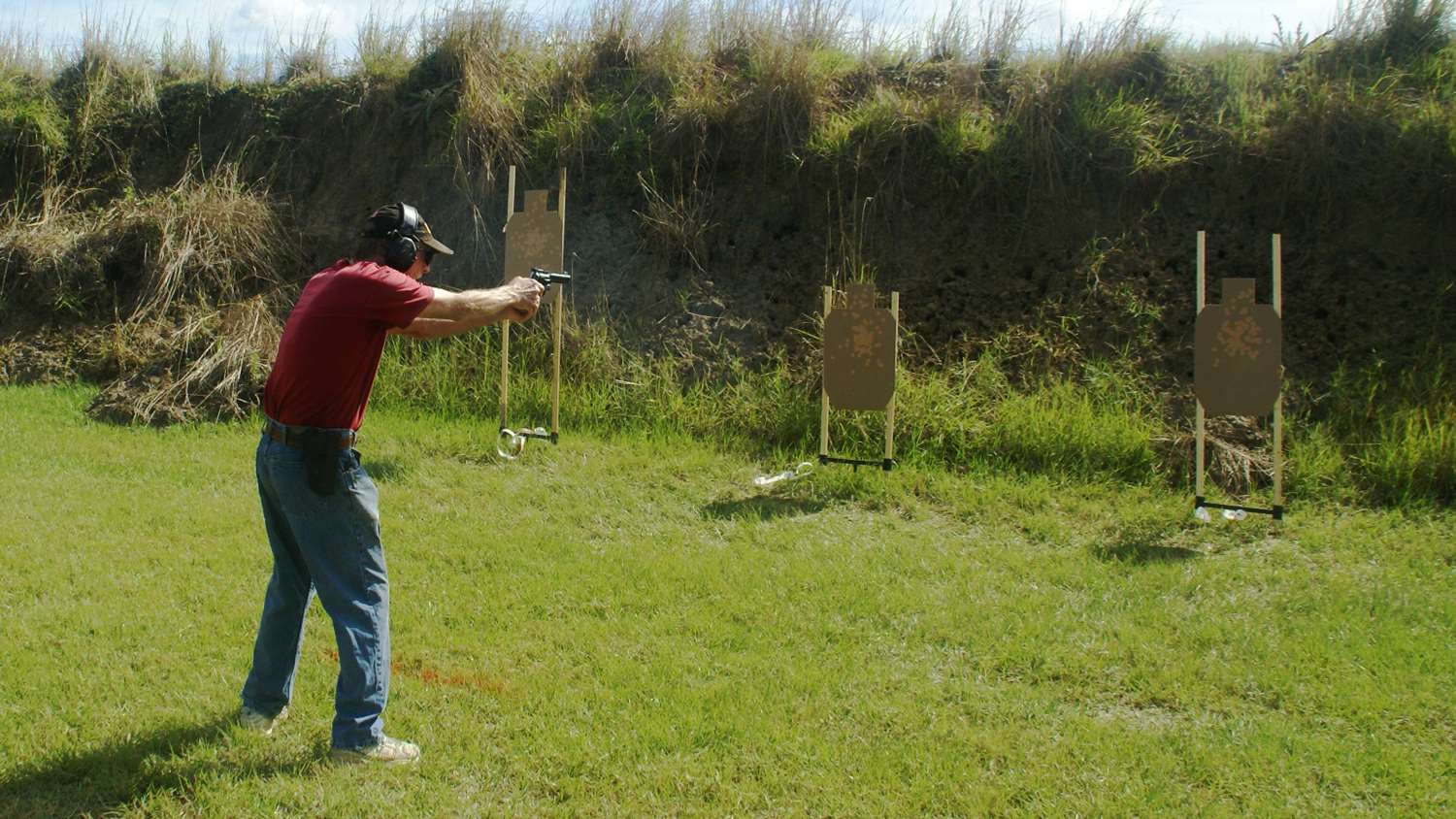
A “live trigger” means that once the first shot is fired the trigger never stops moving. It is either coming back to trigger a round or moving forward to reset, before it immediately moves rearward again. This includes transitioning between targets. The trigger keeps moving. This is in direct contrast to the “dead trigger” technique; where the shooter allows the trigger to go forward to reset, pauses, confirms sights on target, and begins the lengthy double action pull again. The speed advantage is significant on targets inside 15 yards.
On this writer’s range, engaging a single target with double taps at seven yards using the “dead trigger” technique produced split times averaging 0.80 seconds for the second shot. A “live trigger” reduced split times to 0.27 average (and that is a bit slow by Master standards!). Two targets spaced six feet apart, with one round fired on each, produced dead trigger splits on the second target averaging 0.110, and live trigger splits of 0.42, with perfect hits for each. Those split times make a big difference in the overall match score!
The “live trigger” technique requires a strong, and high grip on the revolver, with an intense focus on the front sight. And a practiced sense of timing.
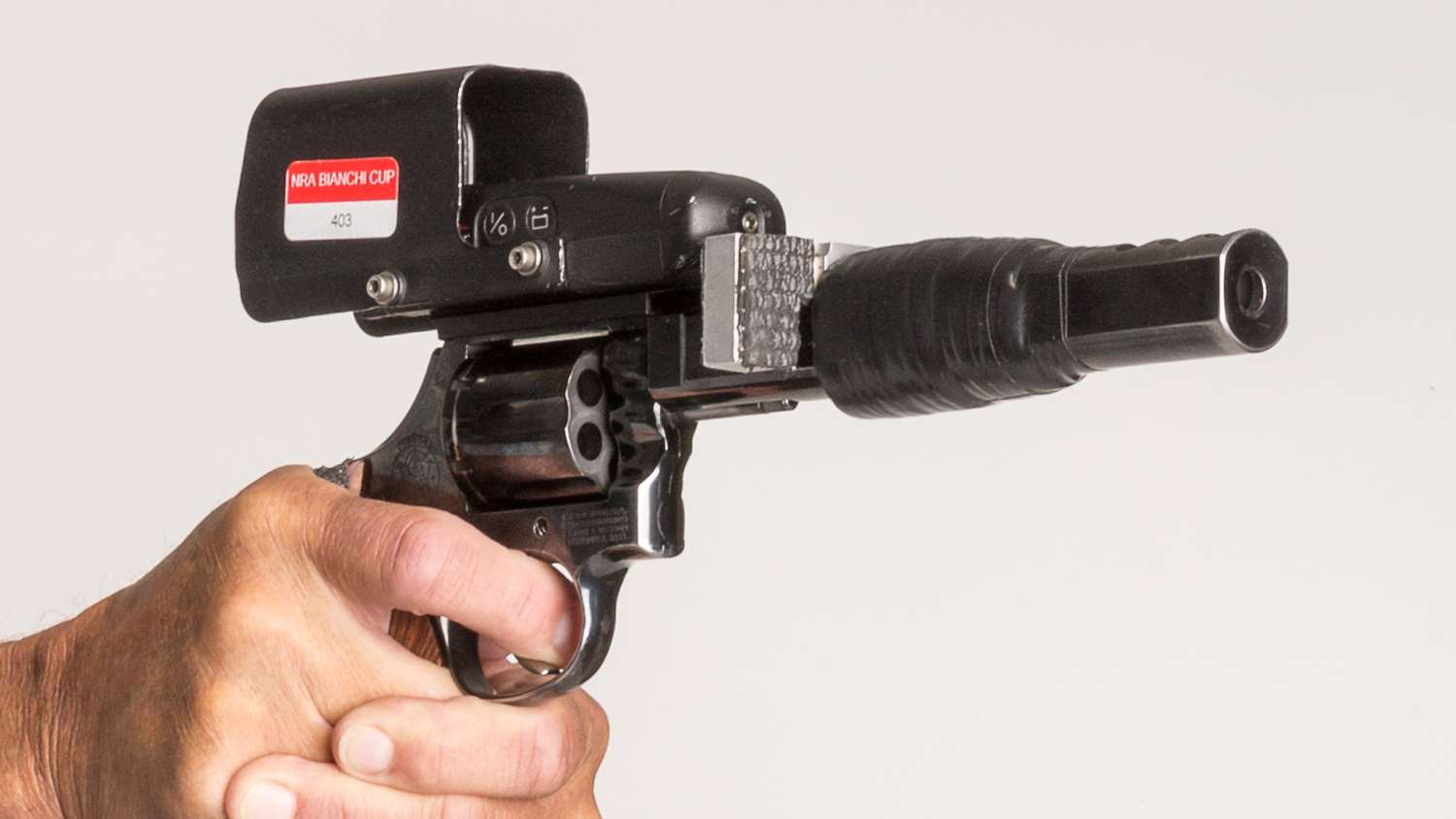
Begin dry fire practice with an empty gun. The objective is to condition the trigger finger to keep moving and not pause after the forward reset. Bring the gun to a single target and trigger six dry shots as rapidly as the front sight can be kept on the target―intense front sight focus! When comfortable with this, set up three targets and trigger two dry shots on each, keeping the trigger moving during transitions. This will help develop the timing needed to finish the trigger pull and break the shot as the sights reach the next target.
Shift to live fire with the Bill Drill. Set a single target seven yards away and fire six rounds as rapidly as you can keep front sight focus, while never stopping the trigger movement. Recoil enters the picture here, but the act of pulling the trigger as the revolver rises in recoil helps bring it back down to the target. Add three targets for transition drills, and don't be discouraged if shots initially break early. Timing and rhythm need to be learned through repetition.
Staging the Trigger
The “live trigger” technique is fast. But it's not the best choice if one has to make a tight shot around a No Shoot, or is trying to nail the X-ring on a 50-yard ICORE target. Inexperienced shooters often shift their grip on the gun to thumb the hammer back, cock the gun, and gain the advantage of a crisp 2.5-3 pound single action (SA) trigger pull.
A key to accuracy with a DA revolver is a firm, high, and consistent grip. Shifting the grip to cock the gun into the SA mode significantly interferes with that.
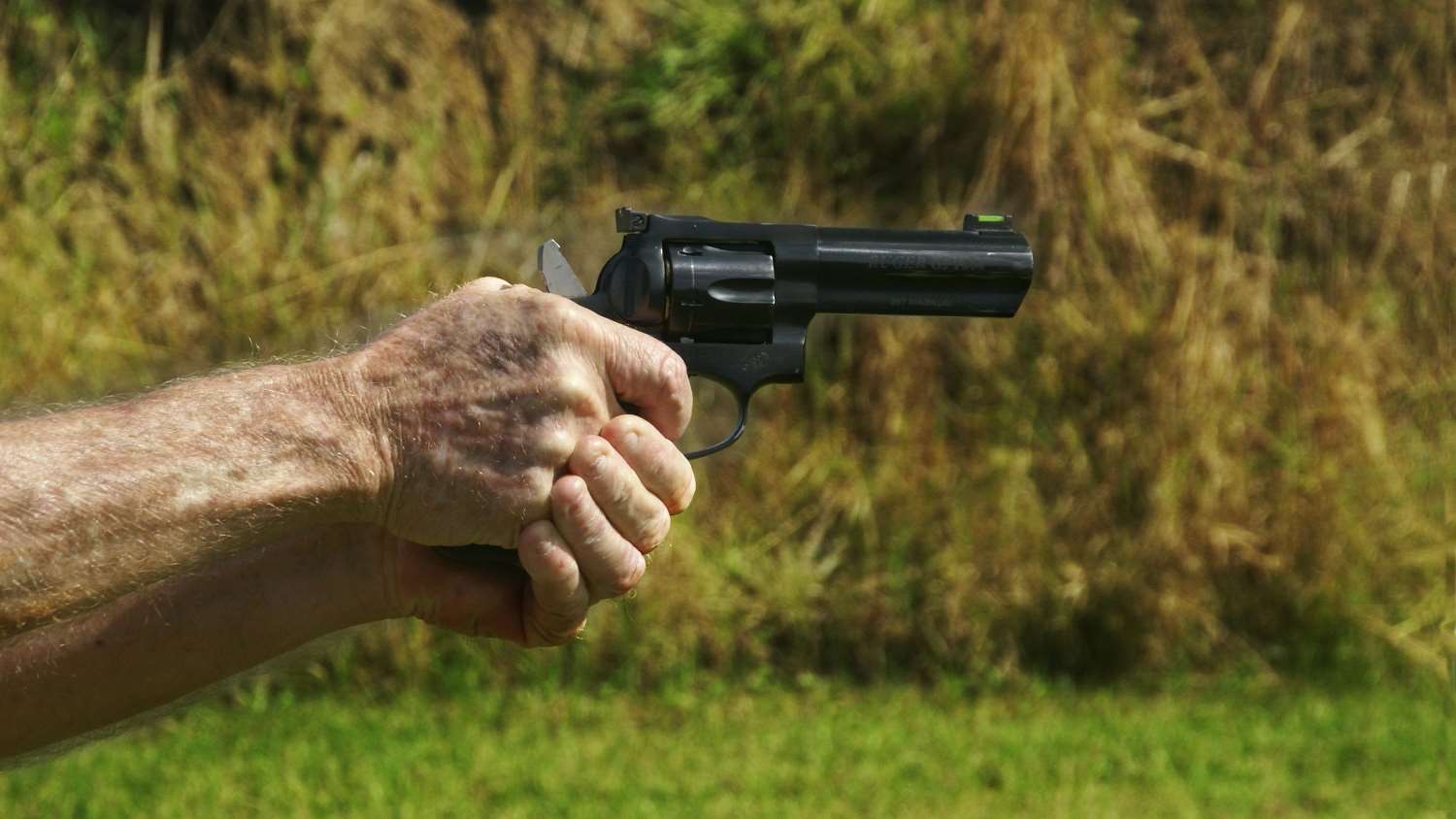
Upper level shooters don't shift their grip to cock the hammer. In fact, it’s unlikely that any of the Master and Expert Class shooters even have a hammer spur on their revolver! Not only does it interfere with the high grip needed for recoil control in rapid fire, but it's not needed to deliver precision fire. Some prefer to use a slower straight pull on the trigger, pausing as needed to adjust their sight picture.
Others just put the DA revolver into the SA trigger mode with the trigger itself. It’s called “staging the trigger.”
When the trigger begins its rearward movement in DA the bolt that locks into the cylinder notch drops out of place. This frees the hand and pawl to rotate the cylinder to bring the next chamber into alignment with the barrel. When that is done the bolt snaps upward to again lock the cylinder in place. That can be distinctly felt (and even heard if decent active ear muffs are worn). At that point the trigger is virtually at the SA pull weight.
It provides the SA pull weight, but without the accuracy-killing hand shift. And does it quickly. Like any advanced shooting technique it requires practice to master, but it's worth the time spent.
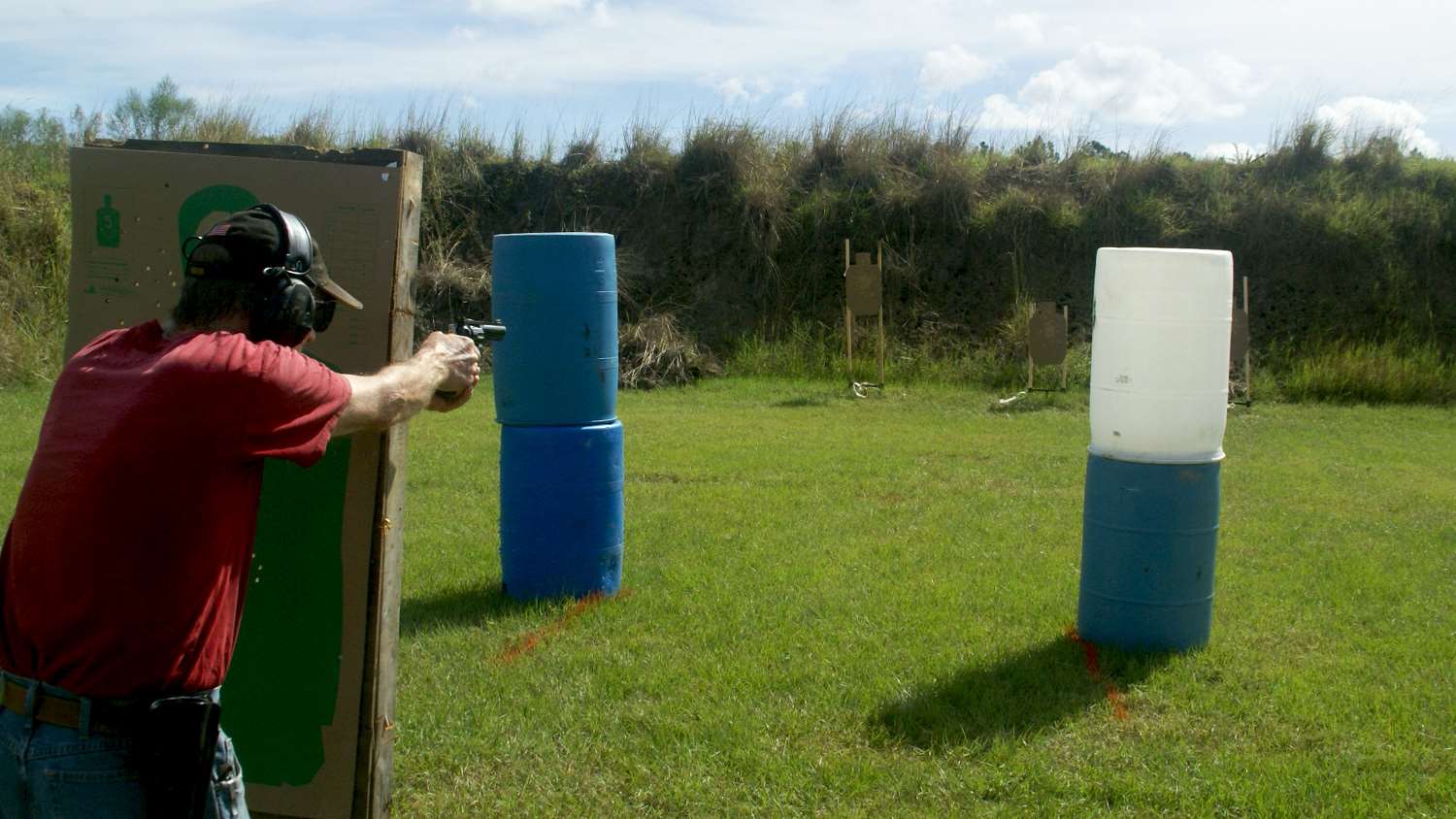
During a recent IDPA club match shooters were faced (due to hardcover) with making two head box shots on two targets at 12 yards―with a non-threat target tucked in between the two. Making it tougher, it was a Limited stage allowing only two rounds fired per target―and they had to be Strong Hand Only!
The “spray and pray” crowd suffered greatly, but staging the trigger allowed this writer to make four perfect hits.
Learning this is best started with an empty gun. There is no need for a range. The living room works fine. The key is to feel the bolt locking back into place as the cylinder achieves its lock up. This must become automatic, and it takes some time. Put an aiming point on the wall and work at achieving the “lock up/trigger staged point.” Some shooters find that putting more finger through the trigger allows them to find a “staging point” where the trigger finger tip hits the offside of the trigger guard as the bolt locks up.
Moving to a live fire range, don’t worry about speed. A target at 20-plus yards is suggested. Have a firm grip, sight focus, and work to get the proper trigger stage before the shot breaks. Accuracy is the goal here.
Both trigger techniques take practice. But they can boost scores by a significant margin. And it’s worth it when you beat a bunch of semi-automatic shooters at your next match―and hear them say: “I can't believe I just got beat by a revolver shooter!”















